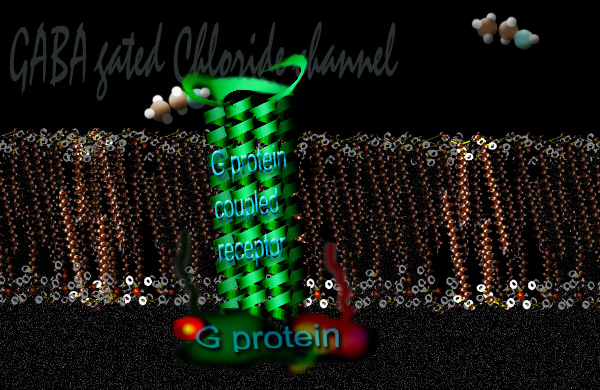To discuss Baclofen you must first understand GABA - Gamma Amino Butyric Acid. The essence of it is as follows, one nerve says tag to another nerve hoping that next nerve will carry on. It does that by releasing a chemical signal at connection points between the nerves.
Just because it chemically tags a nerve does not mean that the next one will just fire and go. Typically many nerve endings converge on these tag points and it becomes a vote. Those in favor and those against. The vote tally is by way of the membrane 'potential', a voltage that rises by way of forcing a gradient of ions to the two sides of the nerve membrane. Get that potential high enough and it is hard to say no to a tag request to go.
So some nerve endings release something that reduces the potential and makes the next nerve firing less likely (typically allowing chloride ion through to equalize on both sides of the membrane sooths the nerve). That's called nerve inhibition. Low potential.
Other nerves release something that makes the cell pores turn into machines that actively pump ions to concentrate like charges to one side of the membrane (all the ++++ to one side and the --- to the other.). Typically, signals for gradient pumping, making high potential which may fire the nerve use an amine transmitter norepinephrine also known as noradrenaline. Easy to remember as people say their adrenaline is running when they are all axcired. Indeed a gland called the adrenal gland can raise the level of general excitement everywhere by dumping this chemistry into the blood stream. Things are in such a high state of readyness to fire that some do without a signal (shaking, nerves, tremulousness). Those receptors that respond to the adrenaline signal have sites where the adrenaline attaches to do its thing. Some of those are called beta receptors. Beta blockers block the attachment of adrenaline chemicals to those sites and thus block the adrenaline effects at those sites. Any concert pianist knows this by heart, as they keep beta blockers handy to kill the tremor caused by this heightened state chemistry.
Soothing, requires lowering that potential and - just say no - chemistry which is generally allowing chloride to pass through chloride specific pores in the membrane, lowering the electrical gradient across the membrane.
 |
|
What does this have to do with Baclofen (also known as Lioresal)? Well GABA is what makes the chloride pores open and thus soothe membranes to not fire. GABA is generally inhibitory. Where many nerve endings converge to bring about best choice logic the nay votes are cast in GABA. Baclofen is a chemical nearly identical to GABA with a small tweak such that it hangs in longer and stronger than the natural GABA. So it is inhibitory.
In spasticity, these town hall neural coming together places (called the internuncial pool) in the spinal cord have been deprived of the normal inhibitory population of neurons. So many circuits just say yes to everything. Not far from what seizure activity does, a focus of high activity can spread and cause local circuits to fire that ought not. So we see something happening in one place (informing the pool) and that FYI feed back winds up triggering more activity.
This is the basis of cross reaction. A reflex elicited in the left leg makes the right leg jump.
So how do you cut down cross reaction (inappropriate signal spread)?
1) Hold still. Don't start a signal. Or move very slowly.
2)
Open chloride gates (Valium, alcohol, barbiturates, Baclofen - all via GABA effect) but Valium, barbiturates, and alcohol escalate in required dosage and create craving. Baclofen does not. There are
reports (unproven) that Baclofen suppresses cravings from a a variety of drugs.
4)
Cut the nerve roots that are coming back from reflex circuits that seem to not turn off once started or which fire way to broadly and for too long. (SDR - selective dorsal rhizotomy)
5) Slow the nerves that carry this information so that high polarization is harder (alcohol blocks)
6)
Change the muscle relationships such that high velocity information is less likely to be reported (myofascia strip in the muscle high velocity areas more or even exclusively).